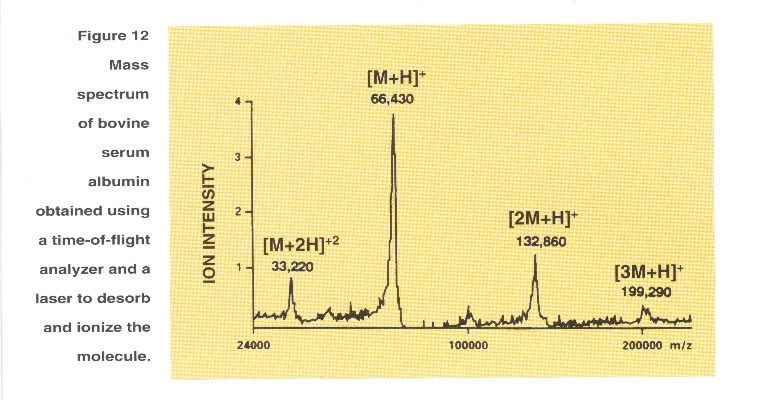
As the desorption ionization methods were developed, there was a corresponding need for mass spectrometers capable of analyzing ions of increasing higher m/z values. Because electrospray ionization can put many charges (z), usually in the form of protons, on amenable large molecules such as proteins, it is an exception to this trend. Electrospray allows a mass spectrometer with a very ordinary upper m/z range of 2000-4000 to analyze compounds of very high molecular mass. The spectrum in Figure 13 is of a protein with a molecular mass of about 29,000 Da. This spectrum was obtained using a quadrupole mass spectrometer with a m/z range of only 2000, thanks to the fact that the electrospray ionization process added from 20 to 40 charges in the form of protons (z =20 to 40) to the protein molecules. All the principal peaks in this spectrum result from protein molecules of the same mass but with differrent numbers of protons attached and hence different m/z values. Electrospray is capable of ionizing biological materials with molecular masses of 10,000 to more than 1,000,000. Molecular mass can often be determined to a precision on the order of one part in 10,000 or better. Because electrospray is particularly compatible with liquid separation methods, it has become a widely used method in biological and pharmaceutical analysis.

Home
.gif)
